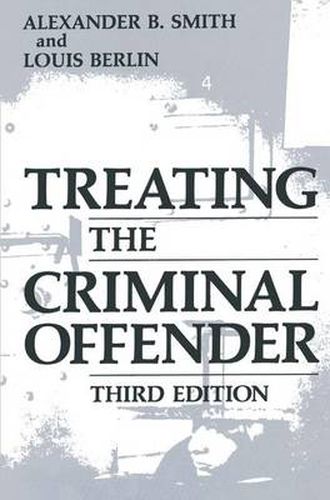Readings Newsletter
Become a Readings Member to make your shopping experience even easier.
Sign in or sign up for free!
You’re not far away from qualifying for FREE standard shipping within Australia
You’ve qualified for FREE standard shipping within Australia
The cart is loading…






This title is printed to order. This book may have been self-published. If so, we cannot guarantee the quality of the content. In the main most books will have gone through the editing process however some may not. We therefore suggest that you be aware of this before ordering this book. If in doubt check either the author or publisher’s details as we are unable to accept any returns unless they are faulty. Please contact us if you have any questions.
The second edition of Treating the Criminal Offender was written in an atmosphere of disillusionment and severe criticism of the traditionalist ap proach to treatment. As crime rates soared, the voices of the critics rose in volume and intensity. And so, this third edition-revised toward the end of the decade of the 1980s-embodies the shift in emphasis from rehabilitating the offender to protecting the community. This shift, in our opinion, does not reject the goal of changing the of fender so as to effect his reintegration into society; it uses the strategy of intensive supervision and surveillance only to effect the desired goal. The use of electronics to monitor the offender’s whereabouts and the swift ap plication of punitive measures following. the awareness of any violation are extrinsic techniques of control. It is our opinion that for the deep, more lasting changes in behavior, some form of casework, counseling, and/or psy chotherapeutic intervention is essential. We are the cohorts who believe in the effectiveness of such treatment modalities when and if applied to the right target population at the appropriate time.
$9.00 standard shipping within Australia
FREE standard shipping within Australia for orders over $100.00
Express & International shipping calculated at checkout
This title is printed to order. This book may have been self-published. If so, we cannot guarantee the quality of the content. In the main most books will have gone through the editing process however some may not. We therefore suggest that you be aware of this before ordering this book. If in doubt check either the author or publisher’s details as we are unable to accept any returns unless they are faulty. Please contact us if you have any questions.
The second edition of Treating the Criminal Offender was written in an atmosphere of disillusionment and severe criticism of the traditionalist ap proach to treatment. As crime rates soared, the voices of the critics rose in volume and intensity. And so, this third edition-revised toward the end of the decade of the 1980s-embodies the shift in emphasis from rehabilitating the offender to protecting the community. This shift, in our opinion, does not reject the goal of changing the of fender so as to effect his reintegration into society; it uses the strategy of intensive supervision and surveillance only to effect the desired goal. The use of electronics to monitor the offender’s whereabouts and the swift ap plication of punitive measures following. the awareness of any violation are extrinsic techniques of control. It is our opinion that for the deep, more lasting changes in behavior, some form of casework, counseling, and/or psy chotherapeutic intervention is essential. We are the cohorts who believe in the effectiveness of such treatment modalities when and if applied to the right target population at the appropriate time.